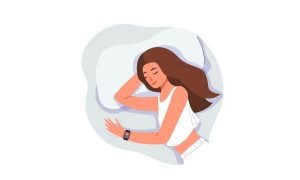
In this C2 lesson plan, students will acquire language related to mental and physical well-being. They will learn expressions and phrasal verbs connected to healthcare.
Introduction
The student reads a passage and identifies phrasal verbs related to health and well-being (fight off, come down with, etc.)
Vocabulary: Expressing medical problems
The student learns some vocabulary used to talk about medical problems, mostly phrasal verbs (go round, pull through, shake off, etc.). They put their knowledge into practice by filling in the gaps with appropriate verbs and then completing phrasal verbs with correct prepositions.
The student is then introduced to idioms used to express medical issues (as pale as a ghost, a bitter pill to swallow, have a new lease on life, etc.). Next, the student completes sentences using correct idioms.
Reading: How is the weather related to pain?
The student reads a passage on the impact of the weather on pain and completes the reading comprehension. The student also matches the new vocabulary with the meaning (pinpoint, chronic, simultaneously, etc.).
Video: Top 10 medical inventions for 2021
The student watches a video presenting top 10 medical inventions for 2021 and then completes the video comprehension activity with the missing information.
Reading: Gluten-free diets
After reading about gluten-free diets, the student answers questions based on the passage. New words are extracted for the student to match them with their definitions (exacerbate, findings, perception, etc.). The student then matches medical problems to their solutions.
Reading: Florence Nightingale
By reading a passage, the student learns about who Florence Nightingale was and answers questions about her life and achievements.
Next, the student matches the doctor with their specialization.
Video: Targeted therapy for cancer
The student watches a video about targeted therapy for cancer and then answers questions about its advantages and benefits. The student acquires new words from the video (inhibit, efficacy, mutation, etc.).
The student sorts out therapies as alternative or conventional (reiki, homeopathy, radiation, etc.).

Sleeping matters
In this C2 lesson plan, students will practice vocabulary related to sleep.
…

It’s nice to be important, but it’s more important to be nice
This lesson plan is tailored for students at the Advanced level…

Catching smugglers
This lesson plan is designed for Upper Intermediate level students, with…


